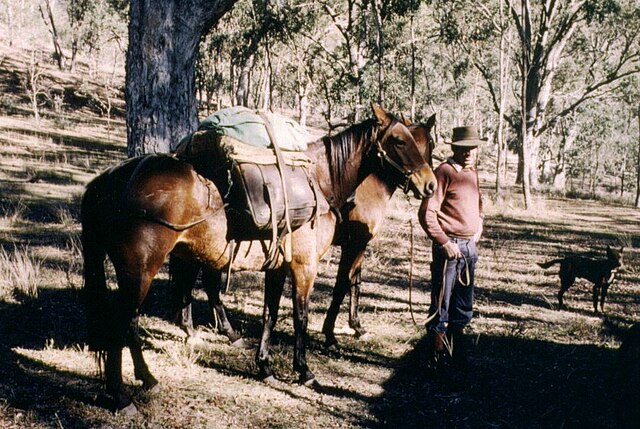Old Spanish Trail (trade route)
The Old Spanish Trail is a historical trade route that connected the northern New Mexico settlements of Santa Fe, New Mexico with those of Los Angeles, California and southern California. Approximately 700 mi (1,100 km) long, the trail ran through areas of high mountains, arid deserts, and deep canyons. It is considered one of the most arduous of all trade routes ever established in the United States. Explored, in part, by Spanish explorers as early as the late 16th century, the trail was extensively used by traders with pack trains from about 1830 until the mid-1850s. The area was part of Mexico from Mexican independence in 1821 to the Mexican Cession to the United States in 1848.
Old Spanish Trail Marker, Las Vegas, Nevada, near Whitney Mesa.
Modern sign marking the Old Spanish Historical Trail across Pahrump Valley on the California-Nevada border. South Nopah Range in background.
A packhorse, pack horse, or sumpter refers to a horse, mule, donkey, or pony used to carry goods on its back, usually in sidebags or panniers. Typically packhorses are used to cross difficult terrain, where the absence of roads prevents the use of wheeled vehicles. Use of packhorses dates from the Neolithic period to the present day. Today, westernized nations primarily use packhorses for recreational pursuits, but they are still an important part of everyday transportation of goods throughout much of the developing world and have some military uses in rugged regions.
A stockman with a packhorse
Mountain guide Alice Manfield using packhorses to carry wooden chairs up Mt Buffalo, c. 1912
A miner with a packhorse during the California Gold Rush
Japanese pack horse (ni-uma or konida-uma) carrying two girls as passengers, circa 1900–1929






